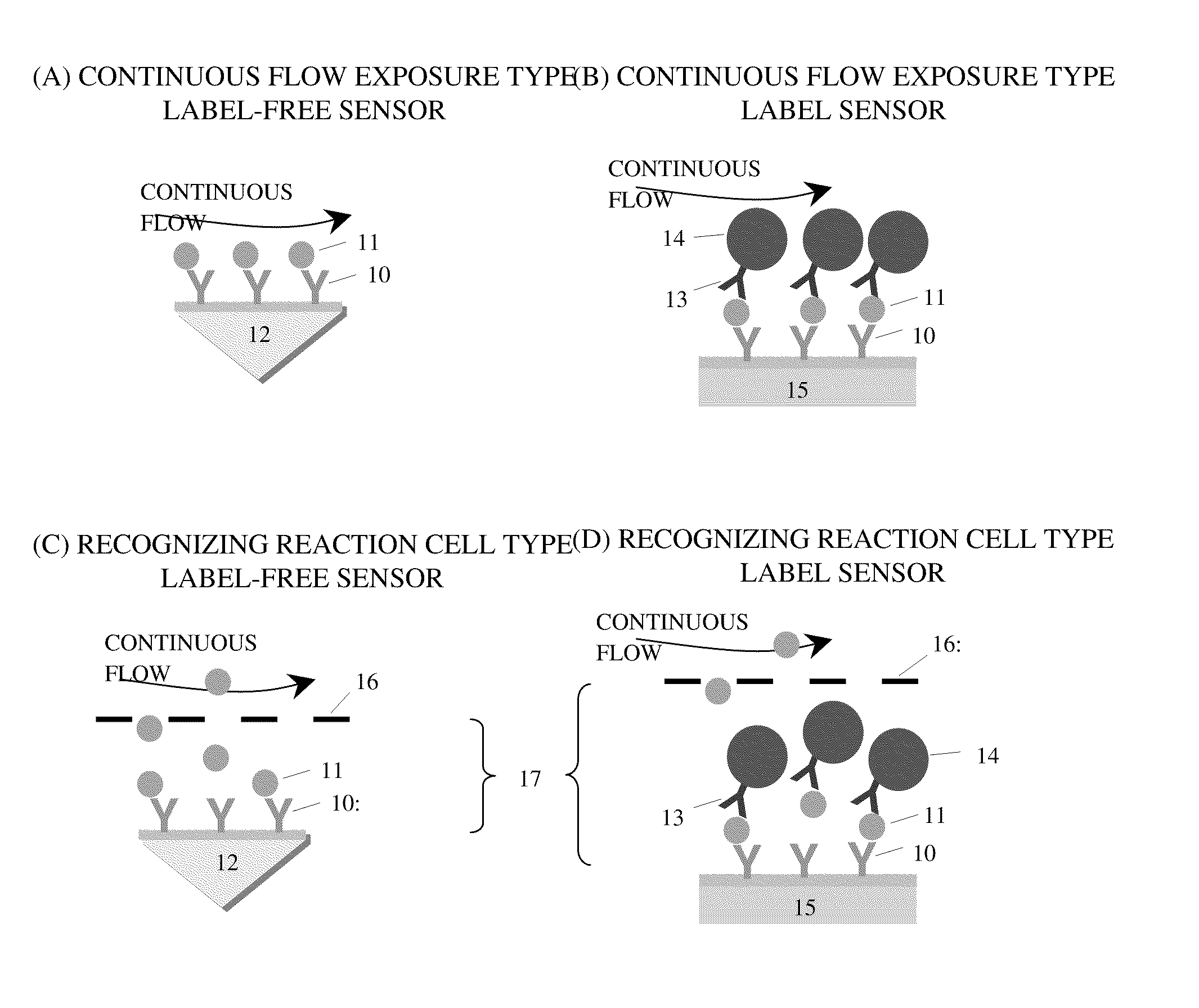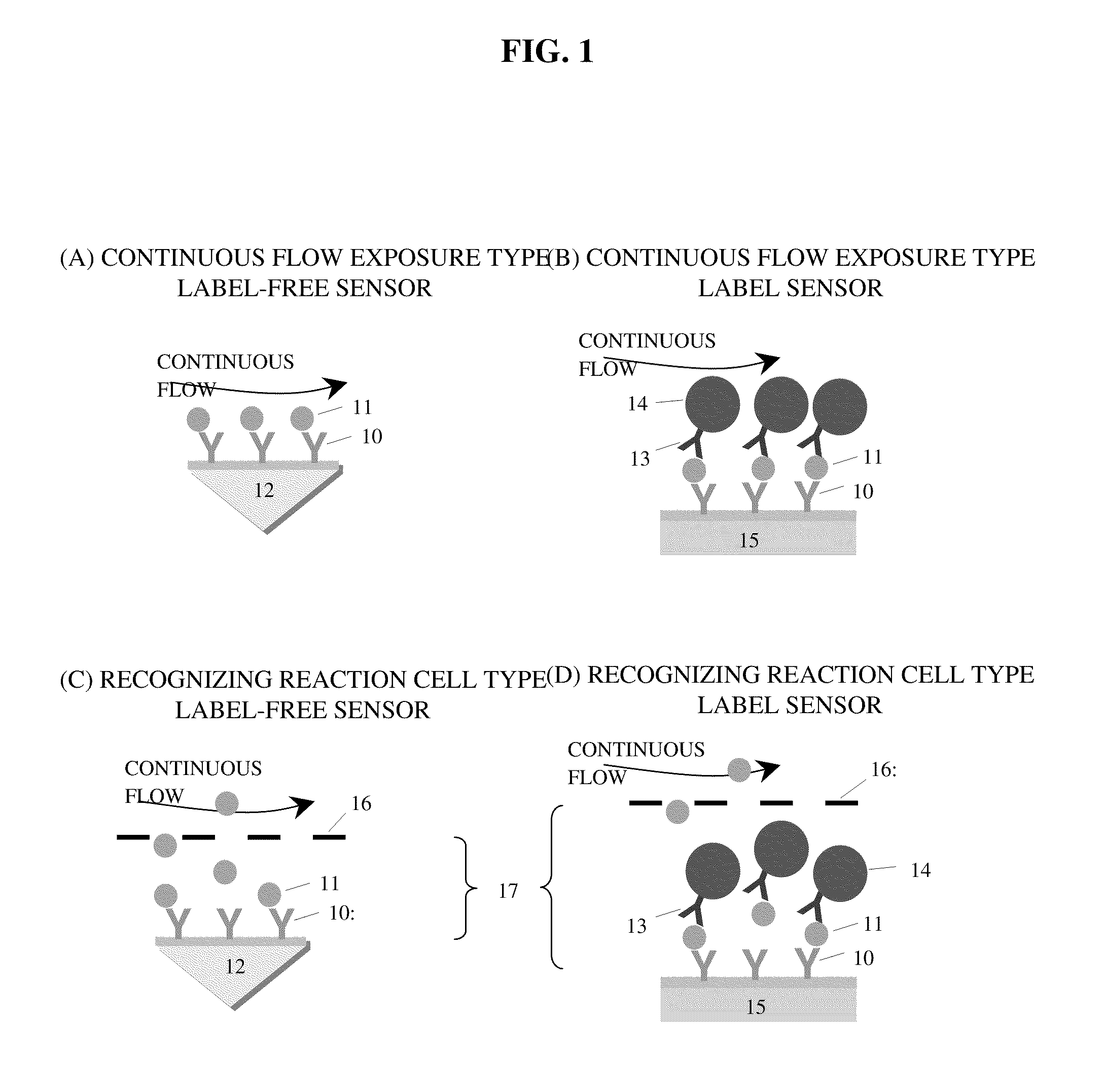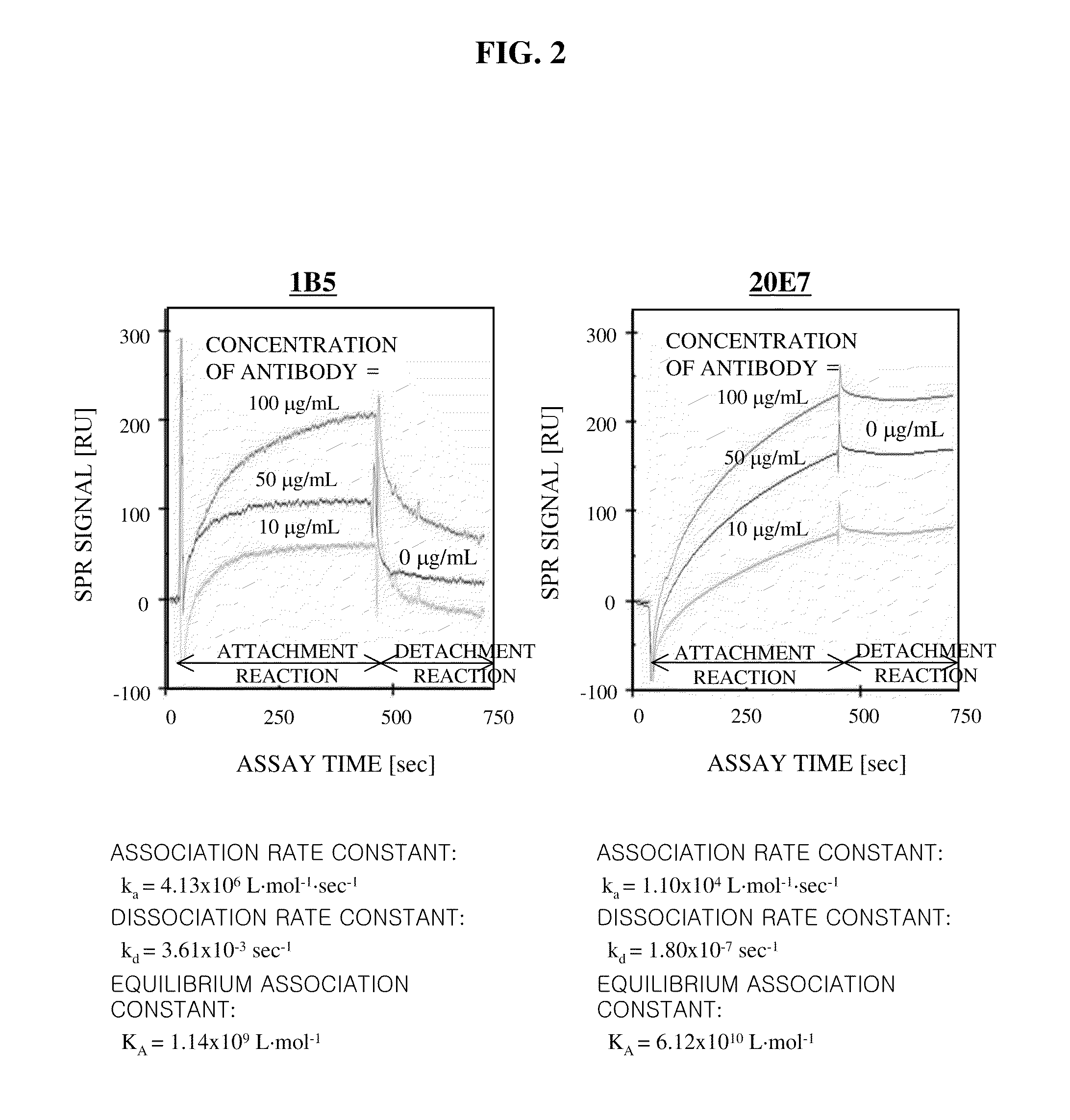Real-time continuous detection device
a detection device and real-time technology, applied in the field of real-time continuous detection devices, can solve problems such as inability to meet demand
- Summary
- Abstract
- Description
- Claims
- Application Information
AI Technical Summary
Benefits of technology
Problems solved by technology
Method used
Image
Examples
experiment resources
[0088]The materials and purchasing sites thereof used for the embodiments of the present invention are as follows. A surface plasmon resonance sensor chip (BIACORE CM5; components: a glass maternal part, a gold thin film having a thickness of 30 nm, and a dextran layer having a thickness of 100 nm), an amine coupling kit (including 100 mM N-hydroxysuccinimide (NHS), 400 mM N-ethyl-N′-(dimethylaminopropyl)carbodiimide) (EDC), 1M ethanolamine hydrochloride, pH 8.5), and 40% glycerol are purchased from GE healthcare (Sweden). A mouse monoclonal antibody (20E7, 3D1; irreversible reaction characteristic) and α2-macroglobulin (tetramer) are supplied from Ab Frontier (Korea). A bovine serum albumin, sodium acetate, sodium phosphate, sodium chloride, glycine, human AB serum (human serum, AB plasma), casein, gold nanoparticle (30 nm), a polymer of a goat anti-mouse antibody and horseradish peroxidase (HRP), and 3,3′,5,5′-tetramethylbenzidine (TMB) are purchased from Sigma (USA). A total IgG ...
embodiment 1
Production of Reversible Antibody of Mouse Monoclonal
[0089]A hybridoma cell producing the monoclonal antibody is manufactured according to a typical standard method. More specifically, an α2-macroglobulin as an immunogen is injected into an abdominal cavity of a female BALB / c mouse which is 6 weeks old. After the immunization, boosting is performed three times in an interval of two weeks. At the third day after the third boosting, mouse is scarified, and the spleen is extracted. The obtained spleen cell is cell-fused with a myeloma cell strain (Sp2 / 0-Ag14). After that, the hybridoma cell is selected.
[0090]With respect to the hybridoma cell, a total of 384 type clones are produced. By using a culture solution containing the antibody produced from each clone, a test of the antibody reaction characteristic to the immunogen and a determination of the total IgG antibody amount are performed. For the test of the antibody reaction characteristic to the immunogen, each of the clone culture ...
embodiment 2
Surface Activation of Sensor Chip and Fixation of Liqand on Sensor Chip
[0092]The surface of the surface plasmon resonance sensor chip BIACORE CM5 is activated by using 100 mM NHS and 400 mM EDC according to the protocol provided from the manufacturer. The amount of the ligand (an antigen or an antibody) that is to be fixed on the surface of the sensor chip is calculated and determined according to the protocol guide provided from the manufacturer. The ligand is diluted to a predetermined concentration by a buffer solution of 10 mM sodium acetate (pH 4.0). The diluted ligand is injected into the sensor chip (flowrae=5 μL / min), so that the fixation is performed. After 20 minutes, a solution of 1M ethanolamine hydrochloride (pH 8.5) is injected for 6 minutes, the remaining surface of the sensor is non-activated.
[0093]The operation of the surface plasmon resonance sensor system (BIACORE 2000, produced by GE healthcare, Sweden) is performed according to the BIACORE 2000 usage protocol pr...
PUM
| Property | Measurement | Unit |
|---|---|---|
| diameter | aaaaa | aaaaa |
| concentration | aaaaa | aaaaa |
| flow rate | aaaaa | aaaaa |
Abstract
Description
Claims
Application Information
 Login to View More
Login to View More - R&D
- Intellectual Property
- Life Sciences
- Materials
- Tech Scout
- Unparalleled Data Quality
- Higher Quality Content
- 60% Fewer Hallucinations
Browse by: Latest US Patents, China's latest patents, Technical Efficacy Thesaurus, Application Domain, Technology Topic, Popular Technical Reports.
© 2025 PatSnap. All rights reserved.Legal|Privacy policy|Modern Slavery Act Transparency Statement|Sitemap|About US| Contact US: help@patsnap.com



